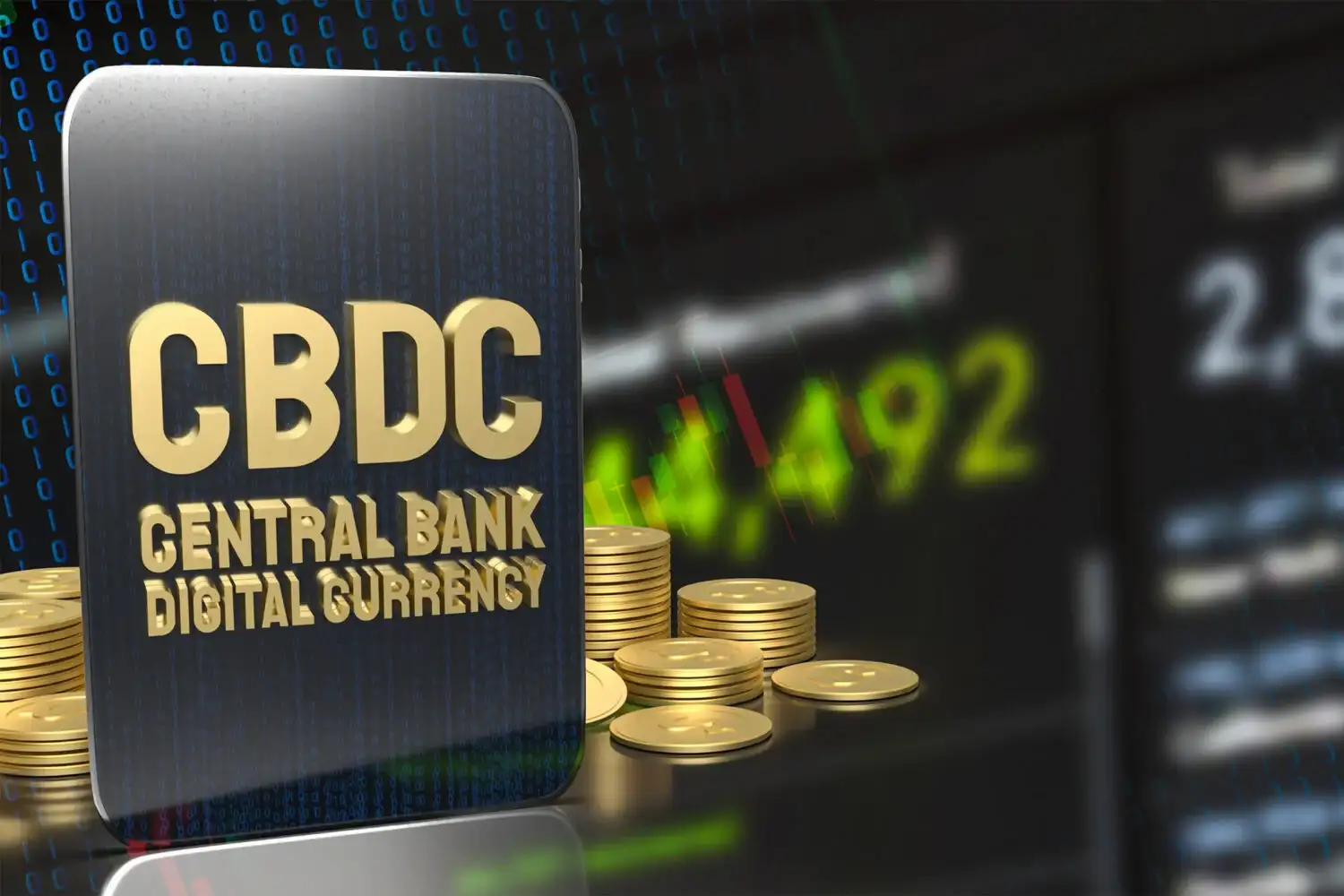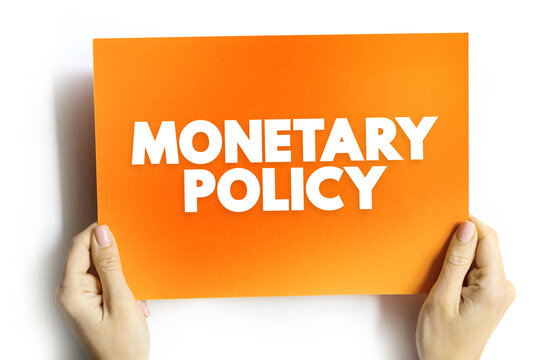Monetary policy and inflation sneak up like a sly fox in your financial henhouse, eating away at your hard-earned cash. But fear not! We can beat this beast with nothing but the wits of smart economics. I’m lifting the veil on these hidden tools that keep prices steady. Dive in as we take a no-frills look at how the right mix of policies keeps your wallet from getting thinner. Get ready to master the art of interest rates, understand the seesaw of economic health, and ensure that your money’s future is as sound as a dollar on the day it was born. Buckle up for a ride through the smart moves that shield us from the inflation scare!
Unveiling the Tools of Monetary Policy
The Dual Role of Interest Rates
Interest rates play two main roles. They can curb spending or boost it. This is vital to control inflation. High rates mean loans cost more. This slows down buying and cools the economy. Low rates do the opposite. They make borrowing cheap. Folks buy more when loans are less costly. More buying can help a slow economy speed up. But it can also raise prices too fast. That’s why central banks must be smart with rates.
Now, let’s talk about another tool called quantitative easing. When times are tough, a central bank may buy bonds. This is quantitative easing. It increases money in the economy. That should make spending and borrowing easier.
Navigating Quantitative Easing and Tightening
What happens when the economy heats up too much? The central bank takes the opposite action. It sells bonds it has. This is called quantitative tightening. By selling bonds, the bank takes money out of play. This should help cool the economy down.
Think of these strategies like a thermostat. They warm or cool our economy as needed. These tools must be used with care, though. They can have big effects on your cash and buying power. The goal is to keep prices stable. A stable price level lets you plan and spend without fear of prices zooming up or crashing down.
When a central bank changes interest rates, it uses your bank to send a message. If your bank’s costs go up, yours do too. It’s less likely you’ll want a loan. And if you don’t take a loan, you’re less likely to spend big. This cuts down on how much cash is chasing goods. If less cash is chasing goods, prices should hold steady. That’s if all goes as planned. If not, folks may spend less, and businesses can suffer. This is why those at the central bank must choose wisely.
The tools we spoke about are just part of how monetary policy works. They shape the flow of money and impact prices. It’s like steering a big ship. Moves must be slow and careful. Quick turns can rock the boat. Our central bankers walk a thin line. They aim to keep our economy just right – not too hot and not too cold. With expert hands at the helm, we can sail smoothly through troubled economic waters.
Inflation Targeting Mastery
Setting Goals: Achieving Price Stability
As a keen observer of economic health, I see price stability as a key goal. To reach it, we rely heavily on the central bank’s smarts. Central bank strategies to tame inflation need to hit a sweet spot. It’s not just about keeping prices stable. The central bank must also make sure the economy grows well.
Inflation targeting plays a big role in this balancing act. It means the bank aims to keep inflation at a set rate. This rate is often around 2%. How do they do this? They adjust interest rates to either slow down or speed up spending and borrowing.
Interest rates impact almost every part of the economy. When rates go up, borrowing costs more. People and businesses slow their spending. This cooling effect can lower inflation. It’s a fine tool for keeping prices in check.
Quantitative easing is another trick in the bank’s bag. It’s when the bank makes more money available to lend. This can spark economic activity without touching the basic interest rate.
Both expansionary and contractionary monetary policy come into play. Think of expansionary policy as putting more gas in the economy’s tank. It can help fight off deflationary pressures, which make prices drop. On the other side, contractionary policy is like tapping the brakes. It’s used to cool off the economy and rein in inflation rates that get too high.
Inflation Measurements: CPI and WPI Analysis
Now, how do we know if prices are rising or falling? We use inflation measurements. The most common ones are the Consumer Price Index, or CPI, and the Wholesale Price Index, or WPI. These tools help us see changes in the cost of living and doing business.
CPI analysis is all about tracking the prices of goods and services that people buy. This index is a lens into how inflation eats at purchasing power – the bang you get for your buck. A rising CPI means costs are going up for folks like you and me, making each dollar stretch less.
Then we have the WPI. This index measures price changes before they reach consumers. It deals with goods at the wholesale level and can signal what’s coming down the pipe for prices later on.
Both CPI and WPI give us clues about different aspects of inflation. They help central banks decide when to move interest rates. They show if there’s too much money chasing too few goods, known as demand-pull inflation, or if costs to make things are driving prices up, which is cost-push inflation.
So, when the central bank aims to keep prices stable, it’s a careful dance. It watches these indexes, listens to what they say, and then picks the best moves to keep the economy grooving just right. It’s like being a DJ for the economy, and the central bank is spinning tracks to keep the party, our economy, jamming without letting it get out of control.
The Balancing Act: Interest Rates and Economic Health
Federal Funds Rate and Central Bank Discount Rate
Interest rates are key to our financial health. They can shape the economy. Lower rates make it easier to get loans and spend money. This can spark growth. But if rates are too low, inflation could rise. That’s when stuff costs more. This balancing act is tough but crucial.
The central bank looks at inflation and decides how to act. They have a target for inflation. This target keeps prices stable. Central banks raise rates to cool off an economy that’s too hot. They cut them to boost an economy that’s cold.
There’s a special rate called the federal funds rate. This rate is what banks charge each other for overnight loans. It’s important because it affects all other rates. When this rate goes up, your loans and credit cards cost more.
The central bank also has a discount rate. This rate is what banks pay to borrow directly from the central bank. When banks can borrow cheaper, they can lend to you cheaper, too.
Strategies Against Stagflation: The Right Monetary Mix
Now let’s talk about something tricky – stagflation. That’s when prices climb high while the economy stalls. It’s like having low gas while your car’s stuck in mud. How do we fix that?
Central banks can use a mix of strategies. They can tweak the money supply. That means more or less money in our pockets. They can adjust reserve requirement ratios. That’s how much money banks need to keep in their vaults.
These moves can help stop prices from jumping too high. It’s all about finding the right balance. A stable economy helps everyone. It lets us all plan for the future without worrying too much about our money.
Expert central banks are nimble. They act fast when they see inflation change. Quick action keeps our money’s value stable. And that’s good for you and me.
Inflation targeting is like a guide for the central bank. Say inflation goes beyond the target. The bank might boost rates to slow down spending. This can help bring inflation back into line.
But sometimes if the economy is in a pinch, they’ll use quantitative easing. That’s a fancy way of saying the central bank will pump more money in the economy. They buy stuff like bonds. This makes it easier for people and business to get money.
Whether it’s fighting too much inflation or giving the economy a leg up, central banks have to play it smart. Using the federal funds rate and the discount rate, they tap the brakes or gas on the economy. With the right monetary mix, they aim to keep our economic engine purring.
Too much inflation eats into our savings and income. Keeping it in check helps us all. It’s all about balance. A little now can keep our economy healthy later. Central banks watch this all closely, so we don’t have to worry.
Ensuring Long-Term Economic Stability
The Rigidity and Importance of Central Bank Independence
Strong countries have strong banks. The central bank must stand alone. It must say no to government demands. This makes it trustworthy. When it stays alone, you know it fights for price stability. This fight helps your money keep its value over time.
For example, let’s talk about the central bank’s secret weapon: setting interest rates. High interest rates can cool an economy that’s too hot. Low rates can warm up a cold economy. It’s like a thermostat for money. By changing rates, the bank can control inflation. Think of inflation as a monster eating your cash. High rates can cage the monster. Low rates can feed it if we need to.
Money value is tricky. It goes up and down like a seesaw. Today it can buy two apples; tomorrow, maybe only one. Central banks aim for a steady money value. They target inflation to keep things stable. The goal is not too hot, not too cold, but just right.
The central bank watches the economy. It uses tools like the consumer price index (CPI) to check prices. The CPI tells us how much stuff costs over time. The bank wants prices to go up slowly. If they jump too fast, that’s bad for us. We can buy less with the same money. The bank uses this info to tweak interest rates. This helps to keep our cash strong.
Anticipating Market Movements: Asset Purchases and Forward Guidance
Now, let’s peek into the future. Banks love to plan ahead. They buy and sell stuff like bonds to guide the economy. This is called open market operations. They can pump money into the system. This helps when things are bad, like in 2008. Back then, banks bought a lot of bonds. This pushed money into the market. It’s like giving your plants water during a dry spell.
The bank also tells us what they plan to do. This is called forward guidance. It’s like a weather forecast but for money. When they say they’ll keep rates low, people spend. Businesses borrow and grow. This can help stop bad times from getting worse.
Forward guidance is smart. It calms the market. It’s like a promise that the storm will pass. The bank says, “We’ve got this. Trust us.” And it works. People stop worrying so much. They keep buying and selling. This keeps the economy humming.
Central banks have a big job. They must keep money stable and help the economy sail smooth. They use interest rates, open market operations, and forward guidance to do this. They work alone but for us all. Their independence is key to their power. It keeps our money strong today and tomorrow.
We’ve covered a lot about how money policy tools work. We looked at how interest rates can do two big jobs and dug into two ways of managing money: easing and tightening. We also learned how setting goals helps to keep prices stable and why it’s vital to check how much stuff costs through CPI and WPI.
Then we saw how tough it is to get the balance right with interest rates to keep our economy healthy. We talked about the federal funds rate and the central bank’s discount rate. We learned ways to fight stagflation, a mix of no growth and high prices.
Lastly, we checked out how important it is for the central bank to stand strong and be independent. This helps to make sure our economy is stable for a long time. We also looked at how banks get ready for what might happen in the markets.
From all this, I hope you see that smart money moves can help our economy win. Understanding these tools gives you a peek into how big decisions can shape our economic future. Let’s use this knowledge to make better choices and keep our economy strong.
Q&A :
How does monetary policy influence inflation?
Monetary policy affects inflation through controlling the money supply and interest rates. When central banks like the Federal Reserve change the interest rates, it impacts borrowing costs, consumer spending, and business investment. If the monetary policy is expansionary—with lower interest rates—the increase in money supply tends to boost economic activity and raise inflation. Conversely, contractionary monetary policy—with higher interest rates—aims to slow inflation by reducing spending and investment.
What is the relationship between monetary policy and inflation rates?
The relationship between monetary policy and inflation rates is inversely proportional. Central banks use monetary policy tools to achieve a desired inflation rate, typically targeting a balance between low unemployment and stable prices. They increase interest rates to cool an overheating economy and curb high inflation, or lower rates to stimulate growth in a sluggish economy. Ideally, a well-calibrated monetary policy helps maintain inflation at a healthy level, ensuring long-term economic stability.
Can tight monetary policy reduce inflation?
Yes, a tight—or contractionary—monetary policy can reduce inflation. By increasing interest rates and reducing the money supply, central banks can reduce the spending power of consumers and businesses. This decrease in demand can lead to lower price levels, thereby helping control and reduce inflation. However, if applied too vigorously, it can also slow down economic growth, increase unemployment, and lead to recession.
How do central banks use monetary policy to target inflation?
Central banks, like the Federal Reserve, use interest rates and other monetary tools to influence the level of economic activity and target inflation. They may set inflation targets and adjust policy rates to steer inflation towards these targets. For instance, if inflation is above the desired level, the central bank may increase policy rates to discourage borrowing and reduce the money in circulation, aiming to decrease economic activity and bring down inflation.
What are the consequences of not controlling inflation through monetary policy?
Failing to control inflation through monetary policy can lead to hyperinflation, where the price levels skyrocket uncontrollably, severely eroding the purchasing power of the currency. This can cause economic turmoil, as prices may rise faster than wages, leading to a decrease in real income and potentially causing a loss of consumer and investor confidence. Long-term uncertainty and instability can discourage investment and harm the overall economic growth.






